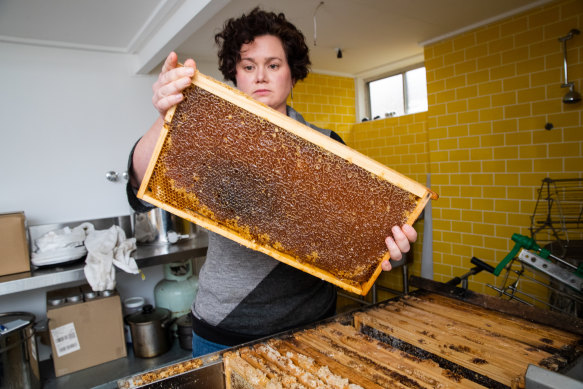More than 12,000 honeybee hives have been destroyed since varroa mites were detected at the Port of Newcastle in June and authorities have started baiting feral bee populations to try and contain the outbreak.
One hundred premises in NSW, across Newcastle, Port Stephens, the Central Coast and the upper Hunter, have tested positive for the mite and, with no end in sight, the first 100 days of the outbreak has already cost $63.2 million.
With one third of Australia’s food dependent on honey bee pollination and the industry worth an estimated $14.2 billion to the Australian economy, living with the mite would increase costs for beekeepers, which could drive grocery prices up and quality down, says CSIRO research scientist Dr John Roberts.
“By having varroa mites, beekeepers have to do a lot more work to keep their hives alive and healthy…there will be inevitable losses both from managed hives, but also from beekeepers finding it just too difficult and too costly to manage hives.
“All of this filters down to the broader community where potentially there’s not going to be as much supply, or the quality of some of these products might be impacted as well.”
Minister for Agriculture Dugald Saunders said that the NSW government was committed to eradicating the mite which, if accomplished, would be the first time it has ever been done.
Beekeeper Anna Scobie said all 90 of her hives are to be euthanised and that it has been personally and professionally heartbreaking.Credit:Edwina Pickles
“Any other approach would devastate not just out beekeeping industry, but our state’s horticulture, broadacre cropping and pastoral plant sectors due to lack of pollination.”
Anna Scobie, a beekeeper who lives in Newcastle, said that all 90 of her hives were being euthanised, and 70 had already been destroyed.
“It was our business, but we aren’t able to run the business anymore. All of our hives were in the outbreak area so we’re not able to trade anymore,” Scobie said.
Despite the heartbreak it has caused her both personally and professionally, Scobie says that she does believe eradication is possible.
“I feel like they [DPI] really have found the outside edge and where it had expanded to. Lots of people I know out of area are doing the alcohol wash [detection] and not finding it [the mite].”
Roberts said that complete eradication was “not a straightforward process”, but that didn’t mean it can’t be done.
“The reason that we are still pursuing eradication is because we are seeing good containment…where we are at now is our last component of complete eradication, which is the most challenging, and that is the feral honeybee population.”
Roberts said that trying to identify all the feral colonies in the eradication zone was practically impossible, which was why the next step was baiting.
The Department of Primary Industries (DPI) confirmed that baiting of feral bees had begun last week at Jerry’s Plains in the Hunter region, and would eventually extend into other eradication zones.
Of the 100 infected premises in NSW, the DPI said that all confirmed cases are either linked to existing cases or are geographically related, indicating that the mite has already been contained to the eradication zones.
Minister Saunders said that while authorities continue efforts to eradicate the mite, the government was investigating its origin.
“For context, the Varroa mite genome is 13,000 times the size of COVID, so sequencing presents a significant amount of work for Department of Primary Industries scientists. We expect this process to continue on for several weeks, maybe months.”
Most Viewed in National
From our partners
Source: Read Full Article
